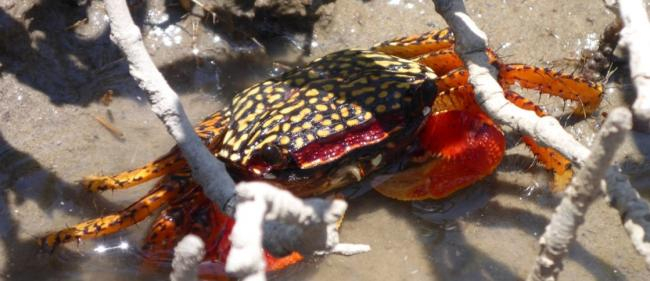Research aims
Crabs play an essential role in many coastal ecosystems, both as ecosystem engineers and mediators or even drivers of ecosystem processes. Living at the interface of marine and terrestrial influences, they are prone to frequent and sudden changes in their biotic (food sources, competitors, predators etc.) and abiotic (salinity, pH, temperature etc.) environment, as well as impacts of human activities (e.g., land and resource use, pollution).
In a series of laboratory experiments and field studies along environmental gradients in various mangrove sites, we aim at better understanding how these key players of mangrove ecosystems and important resources for human use respond to changes in salinity, the availability of food sources of different origins, and impacts of stress through heavy metals and organic pollutants. As such, this project integrates among many of the other projects of the WG Mangrove Ecology.
The use of food sources (particulate organic matter, e.g., vegetal detritus) of different origins (mangrove leaf litter versus seagrass or algal wrack deposited ashore), their digestive processing and deposition in the sediment will affect the stability of the organic matter store in the sediment and will, thus, be relevant in the context of climate change mitigation.
Changes in salinity, as predicted in scenarios of environmental change, will directly affect crab performance and the above processing of organic matter. The responses of crab-driven ecosystem processes are being studied along natural salinity gradients. Heavy metals and organic pollutants are of increasing concern in tropical coastal areas, where industrial activities and developments, as well as land use and a lack of proper waste treatment, threaten the environmental integrity.
The accumulation of these substances in crabs (and fish and shellfish) is an alarming aspect of human health in those societies that make their living by collecting, consuming and selling seafood. Besides fighting the sources of pollution, developing indicators that might help avoiding the consumption of contaminated food is pivotal.





